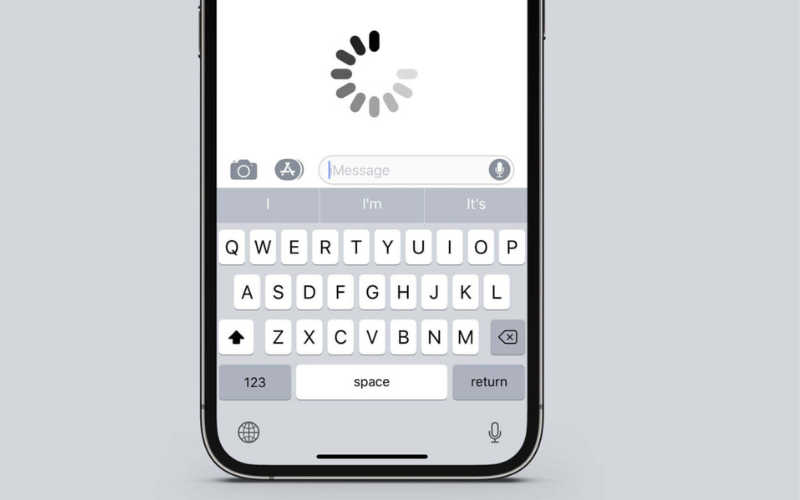Encountering a sluggish or unresponsive iPhone keyboard can be exasperating. An iPhone keyboard should promptly register each keystroke. Nevertheless, numerous users have experienced keyboard latency after updating to iOS 17.5.1.
Whether your iPhone keyboard intermittently lags or ceases functioning altogether mid-typing, below are several tried and tested remedies to rectify the iPhone keyboard latency issue in iOS 17.5.1 or prior iterations.
Table of Contents
Toggle1. Force restart your iPhone
It’s plausible that your keyboard isn’t defective; instead, it might be experiencing lag due to excessive memory utilization on your iPhone. If your iPhone has become unresponsive due to this issue, its keyboard functionality may also be compromised.
A simple solution to alleviate this problem is to force restart your iPhone, providing your keyboard with a clean slate. To execute this maneuver, press and release the Volume Up button, followed by the Volume Down button. Subsequently, press and hold the Side button until the Apple logo materializes.
Moreover, it’s advisable to refrain from concurrently launching multiple applications on your iPhone to mitigate the likelihood of future occurrences. If you have numerous applications open, promptly close those not actively used to alleviate strain on your iPhone’s RAM.
2. Remove third-party keyboards
Employing third-party keyboards can provide a novel and enhanced typing experience on your iPhone. However, these keyboards can also adversely affect device performance. Certain third-party keyboards may also collect data and impose substantial demands on system resources.
If you are encountering sluggishness or other issues with third-party keyboards such as the Grammarly keyboard or Microsoft SwiftKey, consider reverting to the default iPhone keyboard, which boasts a lighter footprint. You may also remove the third-party keyboard from your iPhone’s keyboard roster. To accomplish this:
1- Go to Settings → General → Tap Keyboard.
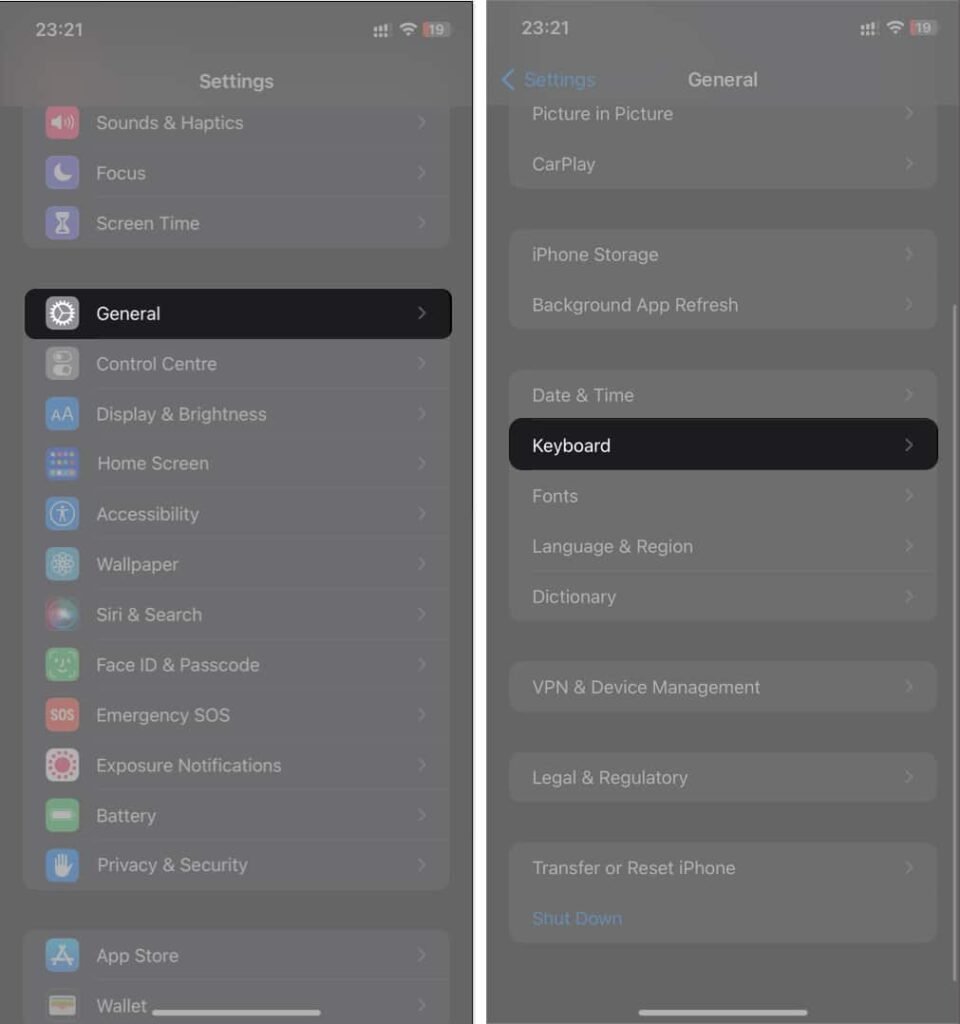
2- Select Keyboards at the top → Tap Edit at the top-right.
3- Touch the red round icon to the left of the third-party keyboard.
4- Finally, tap Delete to the right to remove the keyboard.
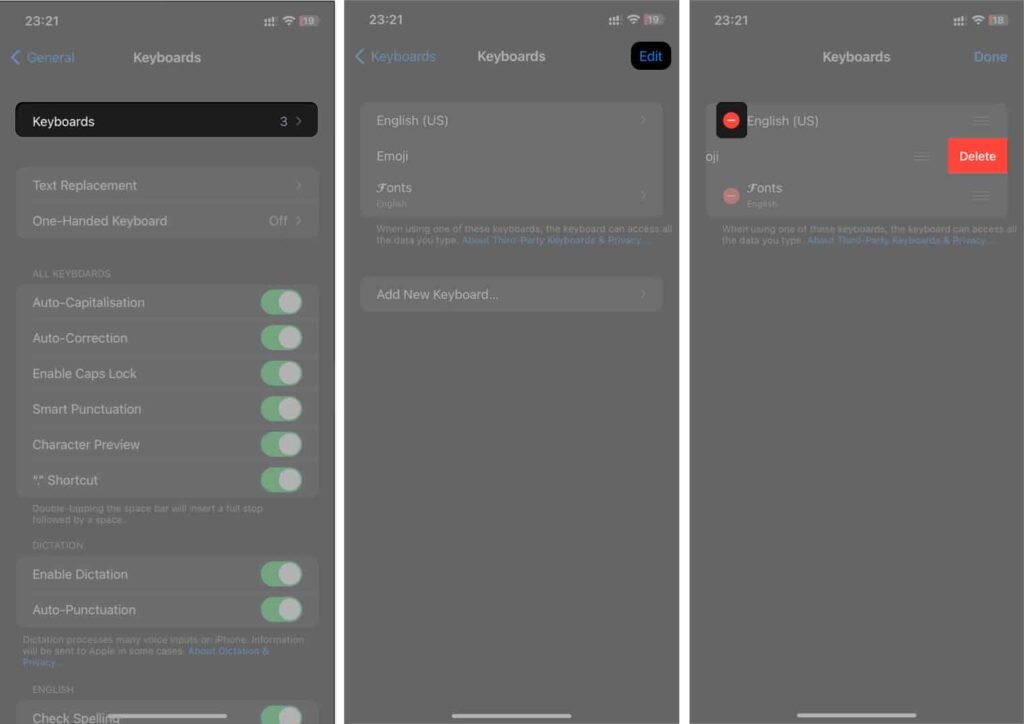
3. Reset Keyboard Dictionary
The presence of outdated data lingering from prior updates may be the culprit behind the lagging iPhone keyboard in iOS 17.5.1. A straightforward remedy for this issue is to initiate a reset of the keyboard dictionary.
It’s important to note that resetting your keyboard dictionary entails losing all previous keyboard configurations, including stored words. However, this method has been proven effective in revitalizing keyboard performance.
To execute a reset of your iPhone keyboard:
1- Go to Settings → General.
2- Tap Transfer or Reset iPhone → Tap Reset.
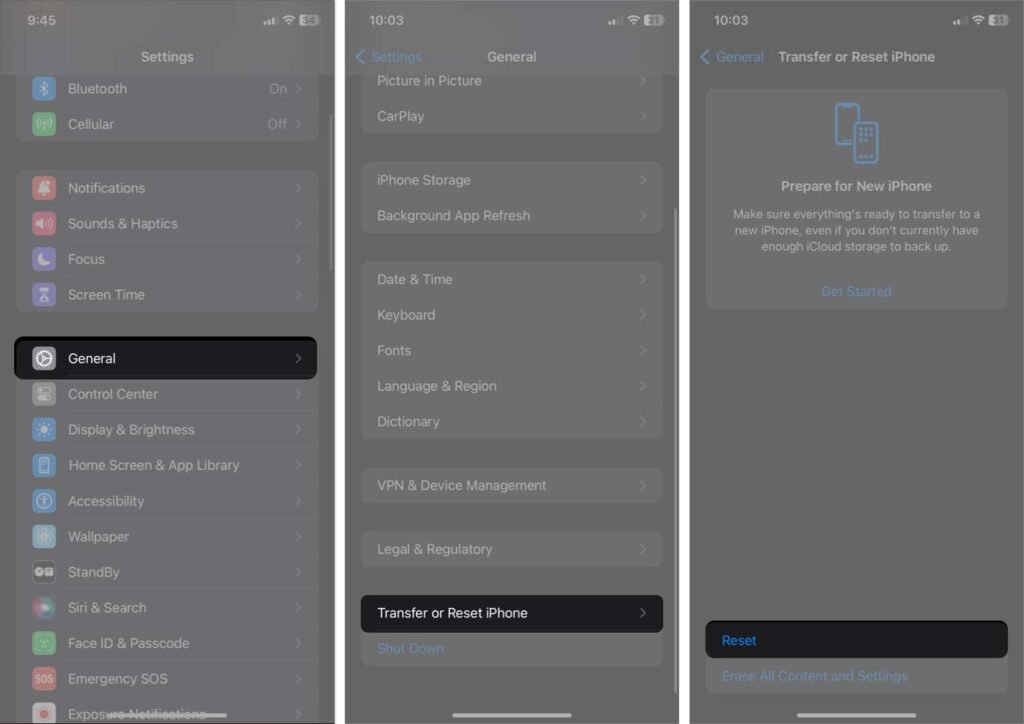
3- Tap Reset Keyboard Dictionary.
4- Enter your passcode when prompted.
5- Finally, tap Reset Dictionary.
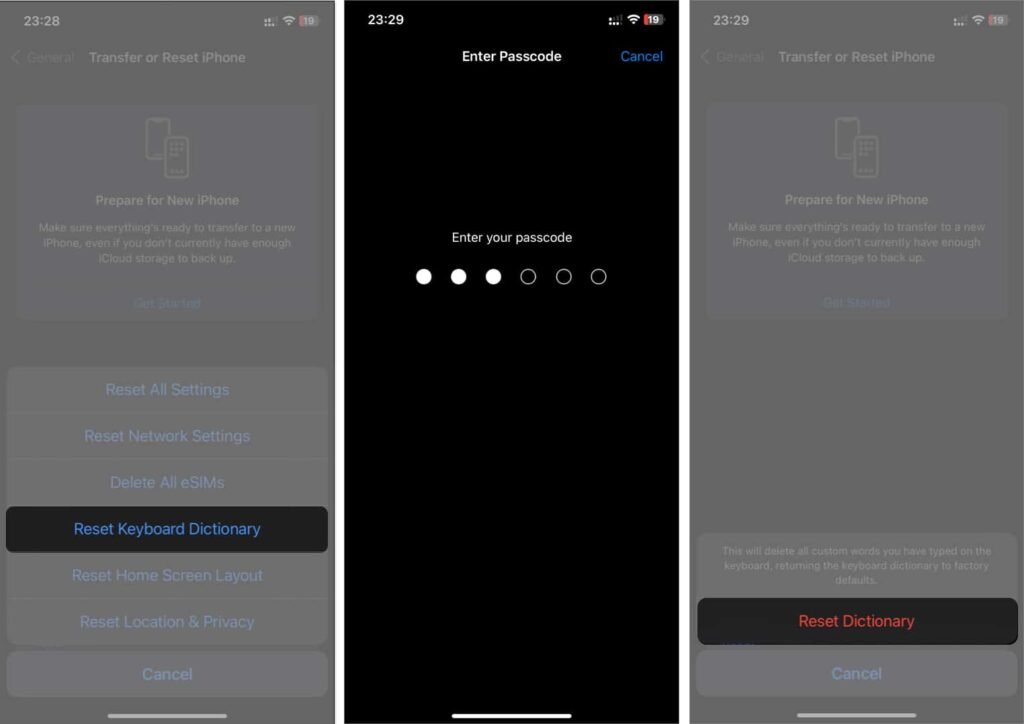
4. Force-close all opened apps and background apps
An accumulation of concurrently running applications can deplete your iPhone’s RAM resources, potentially leading to keyboard lag. In addition to revitalizing the keyboard functionality, forcibly terminating all active applications represents one avenue to ameliorate a sluggish iPhone.
Given the variability in app-closing procedures among different iPhone models, we recommend consulting our comprehensive guide, which details the steps to force-close applications on various iPhone models.
As an added measure, consider terminating all background applications that may not be visibly active. To undertake this action:
1- Head to Settings → General → Go to Background App Refresh.
2- Tap Background App Refresh.
3- Select Off to deactivate apps from running in the background.
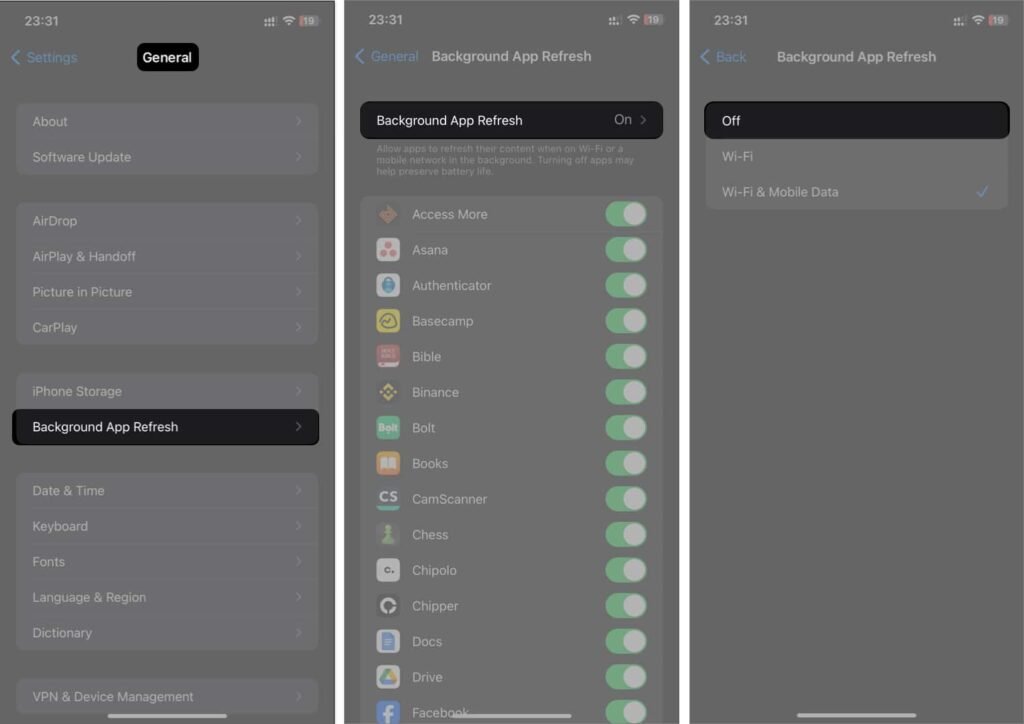
Once done, try opening a text area and check if your keyboard is back to normal.
5. Disable Predictive Text and Auto-Correction
Apple introduced Inline Predictions to augment the iPhone keyboard’s text prediction capabilities. Nevertheless, due to the slight bugginess encountered after the iOS 17.5.1 update, users may need help to fully utilize this functionality.
To mitigate potential keyboard lag issues, it is advisable to deactivate both Predictive Text and Auto-Correction features. This measure may alleviate any performance disruptions experienced with the iPhone keyboard.
1- Go to Settings → General → Keyboard.
2- Scroll down and toggle off Predictive Text and Auto-Correction.
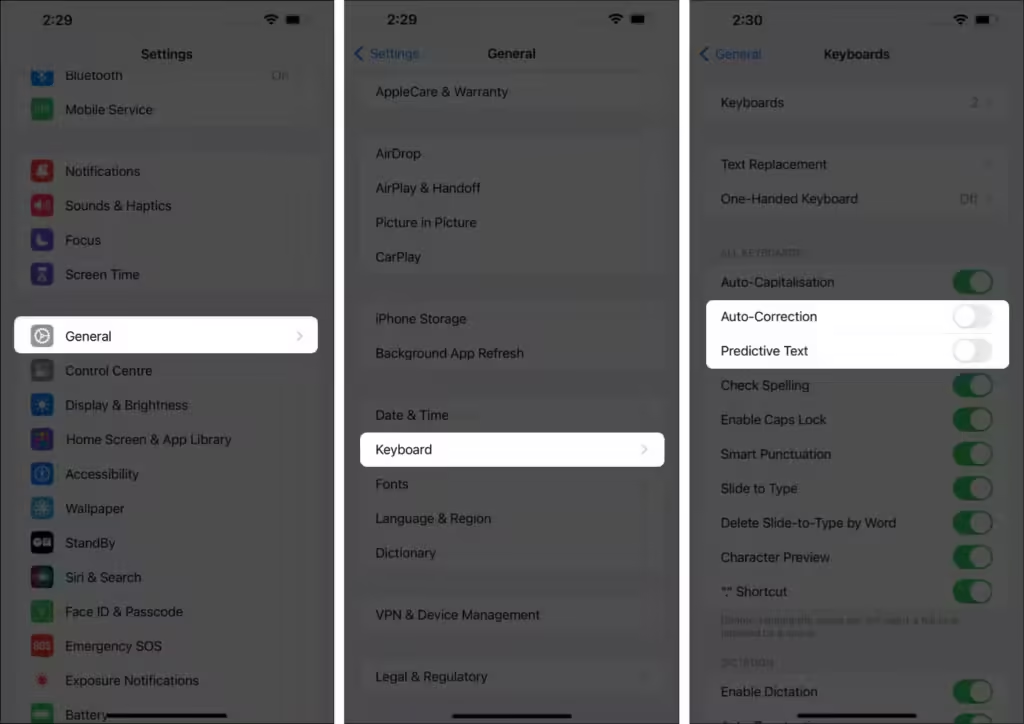
Turning off Predictive Text will automatically disable Inline Predictions as well.
6. Enable Reduce Motion
Enabling Reduce Motion functionality effectively addresses the iOS 17.5.1 iPhone keyboard lag dilemma. By optimizing the user interface performance, it can negate any lag-related issues stemming from the same source.
1- Go to Settings → Accessibility → Motion.
2- Toggle on Reduce Motion.
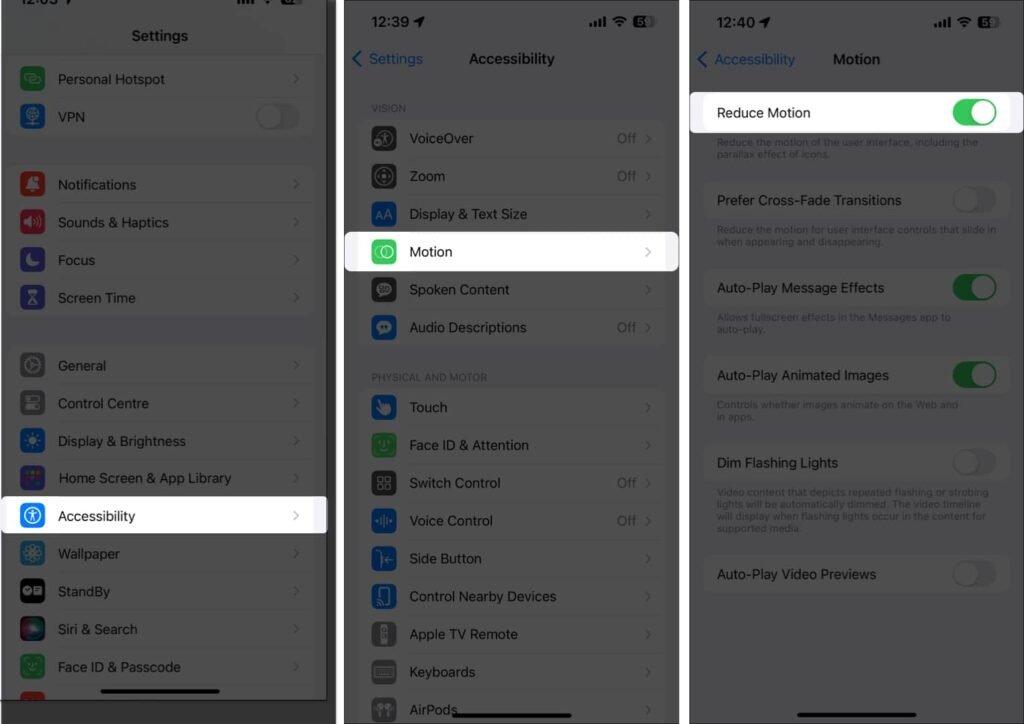
7. Disable and re-enable Keyboard settings
Although infrequent and largely unjustifiable, there have been reports of iPhone keyboard freezing instances, particularly when features such as spelling check and auto-correction are enabled.
To troubleshoot this issue, I suggest first deactivating all keyboard settings. Then, systematically re-enable each setting individually. Test the keyboard functionality after activating each setting to pinpoint the potential source of the problem.
1- Go to Settings → General → Keyboard.
2- Toggle off all the settings. Then, activate them one after the other and try using the keyboard after each feature is turned on.
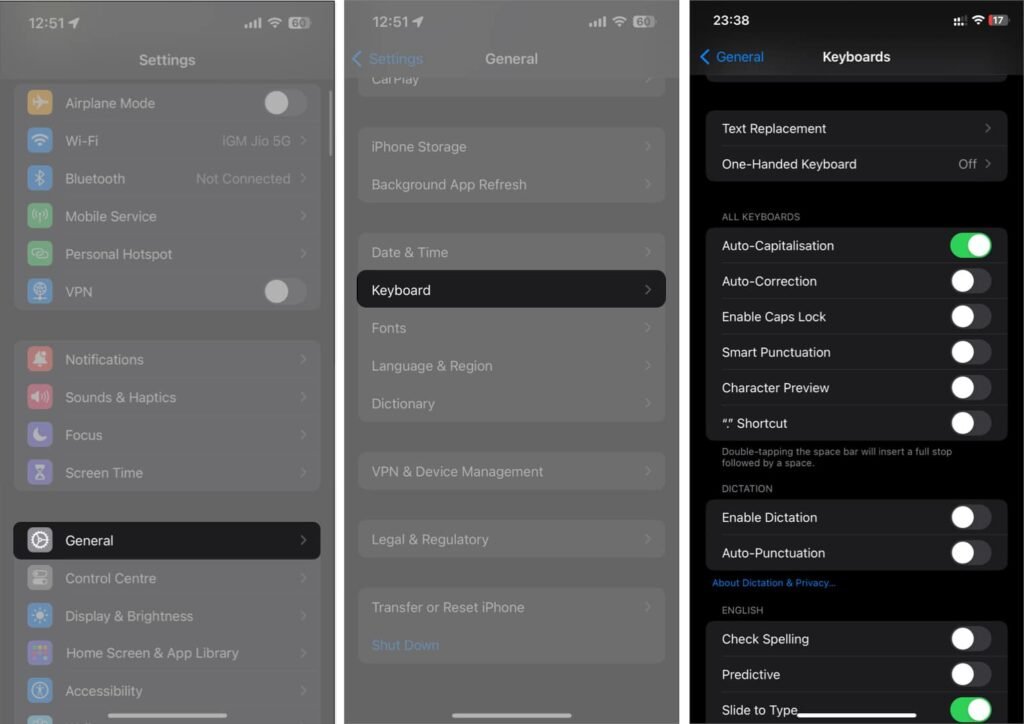
If the keyboard ceases to freeze after turning off all settings, the root cause likely resides within one of the keyboard settings. As previously mentioned, systematically re-enable each setting.
For instance, if Auto-Capitalization is toggled on, assess the keyboard’s performance to determine if the issue resurfaces. Continue this process for each setting until the underlying cause is identified.
8. Try using the keyboard on a different app
It is not uncommon to encounter keyboard lag within certain applications. Resource-intensive applications such as Chrome, Facebook, LinkedIn, and Twitter (X) can significantly impact the performance of your iPhone, including its keyboard functionality.
To address this:
- Attempt to minimize the problematic application and switch to a different one.
- Test the keyboard within various applications consecutively.
- If the keyboard operates smoothly in other applications but experiences freezing in one or specific apps, ensure that the affected app is updated with the latest version.
9. Update your iOS version
Software glitches can lead to various underlying issues, including application compatibility issues that may result in keyboard slowdowns. Apple typically releases prompt iOS updates to rectify such glitches.
Upon the availability of the next update, installing it is expected to alleviate the keyboard lag problem encountered in iOS 17.5.1.
1- Go to Settings → General → Software Update.
2- If there’s an update available, tap Download & Install.
Moreover, it may be advisable to enable automatic updates to guarantee that you remain up-to-date with subsequent iOS rollouts.
10. Reset iPhone
In the event of unsuccessful attempts, it may become necessary to revert your iPhone to its factory default settings. This definitive action is guaranteed to eliminate the persistent keyboard lag on your iPhone.
Nonetheless, it’s crucial to acknowledge that executing this procedure will delete all data stored on your iPhone. Therefore, it is highly advisable to create a backup of your iPhone beforehand. This precautionary measure ensures that you can restore your valuable files from the backup and prevent any data loss.
1- Head to Settings → General → Transfer or Reset iPhone.
2- Tap Reset.
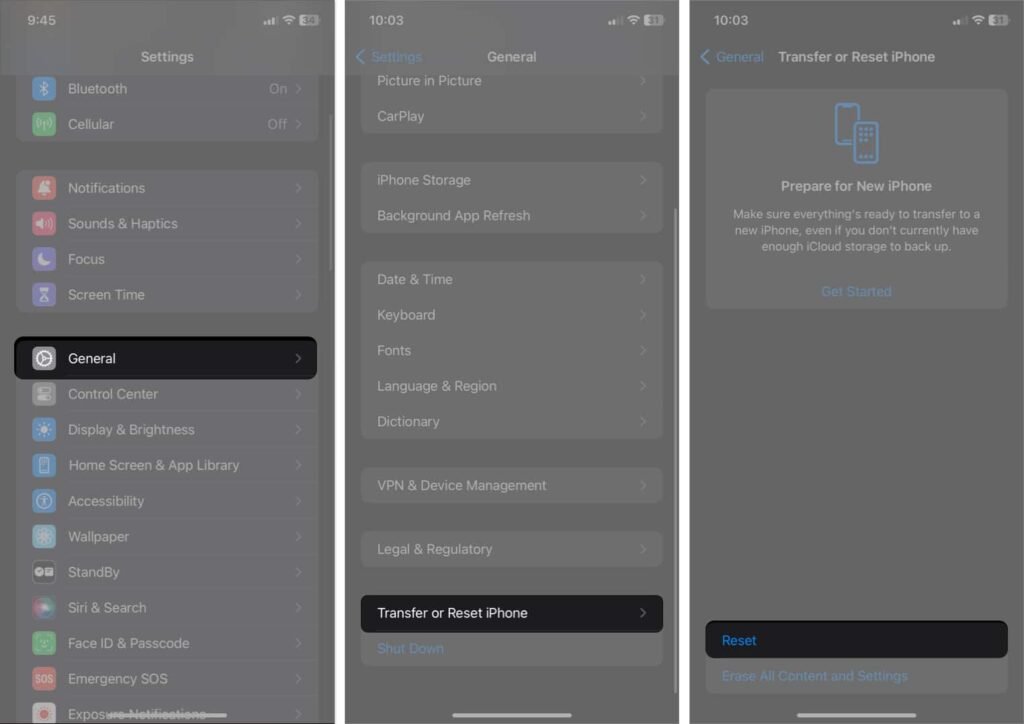
3- Tap Reset All Settings. Enter your passcode and follow the onscreen instructions to restore your iPhone to its factory settings.
Contact Apple Support
If resetting the iPhone didn’t help, it’s time to let the maker take control. Contact Apple Support and let their expertise diagnose the issue.
Since iPhone keyboard lag is usually a software problem, fixing it should take only a short time.
Conclusion
Ordinarily, the iPhone keyboard should function seamlessly. Yet minor inconveniences such as keyboard freezing can be perplexing.
Have you successfully resolved the issue?

